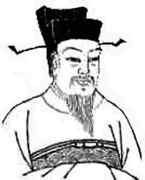Person: Hui (2), Yang

Yang Hui was a Chinese mathematician who wrote several outstanding mathematical texts. These contained solutions of quadratic equations as well as Pascal's triangle and magic squares.
Mathematical Profile (Excerpt):
- However, both Qin and Li's major works appeared about fifteen years before the first work of Yang.
- Zhu Shijie was only born about the time Yang Hui's first texts were appearing so his life also overlapped that of Yang.
- There is a small amount of information about Yang Hui which he relates in his books.
- Again we know the names of four of Yang's friends who were also interested in mathematics, but again as these men are unknown except for Yang's reference to them.
- The best guess that historians make is that Yang was a minor Chinese official.
- Any teacher of mathematics today can identify with what Yang is trying to do here.
- In 1261 Yang wrote the "Xiangjie jiuzhang suanfa" (Detailed analysis of the mathematical rules in the Nine Chapters and their reclassifications).
- He tells us that he had obtained a fine edition of the Nine Chapters on the Mathematical Art which contained notes by Jia Xian on the edition commented on by Liu Hui and later by Li Chunfeng.
- The notes by Jia Xian have not survived so we know of them only through the references from Yang.
- What Yang produced was not intended to be a further commentary on the ancient classic but instead he selected 80 of the 246 problems for his discussion.
- Yang's Detailed analysis contained twelve chapters.
- Nine of the twelve correspond to those of the Nine Chapters but there are three further chapters: one containing geometrical figures, one containing the fundamental methods, and one in which Yang presents a new classification of the problems.
- Each problem is studied by Yang for three different aspects.
- For example, if the problem reduced to the solution of a quadratic equation, then Yang would solve it numerically, then show how to solve a general quadratic equation numerically.
- What Yang's method essentially reduces to is finding the determinant of the matrix of coefficients of the system of equations.
- There is other work in Yang's Detailed analysis that we should single out for a mention.
- A year after producing Detailed analysis Yang wrote "Riyong suanfa" (Mathematics for everyday use).
- Over the next years Yang must have continued to produce material for mathematics texts, but he published nothing more until 1274 when Cheng Chu Tong Bian Ben Mo which means Alpha and omega of variations on multiplication and division appeared.
- In 1275 two further works by Yang appeared; the Practical mathematical rules for surveying and Continuation of ancient mathematical methods for elucidating strange properties of numbers, both being works of two chapters.
- All Yang's volumes of 1274 and 1275 were assembled into what were essentially his collected works called "Yang Hui suanfa" (Yang Hui's methods of computation).
- The topics covered by Yang include multiplication, division, root-extraction, quadratic and simultaneous equations, series, computations of areas of a rectangle, a trapezium, a circle, and other figures.
- This was not the first time Yang had shown such concerns, for his elementary text of 1262 was also clearly designed to help beginners.
- Look at Yang's explanation.
- Finally let us note Yang's remarkable contribution to magic squares.
- We have used the standard term magic square, but Yang does not use the word magic, simply calling them number diagrams.
- Again Yang does not claim any originality here, and writes as if he is presenting well known facts.
- As a final arithmetical treat we give Yang's simplest magic circle.
Born about 1238, Qiantang (now Hangzhou), Chekiang province, China. Died about 1298, China.
View full biography at MacTutor
Tags relevant for this person:
Ancient Chinese, Chinese, Origin China, Puzzles And Problems
Mentioned in:
Epochs: 1
Thank you to the contributors under CC BY-SA 4.0! 

- Github:
-

- non-Github:
- @J-J-O'Connor
- @E-F-Robertson
References
Adapted from other CC BY-SA 4.0 Sources:
- O’Connor, John J; Robertson, Edmund F: MacTutor History of Mathematics Archive
